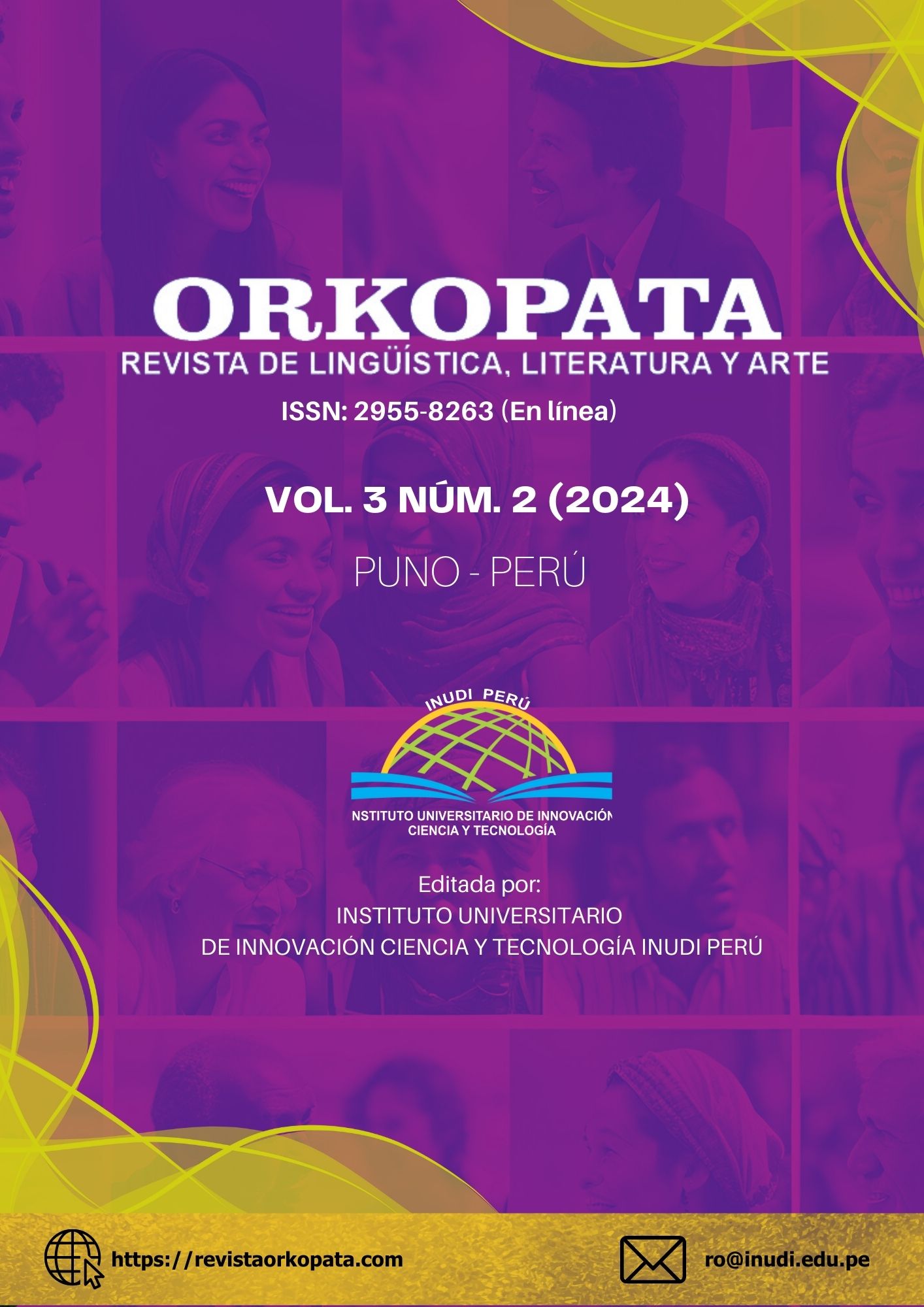Information load and discourse anaphora: a comparison between Spanish and mandarin Chinese
DOI:
https://doi.org/10.35622/j.ro.2024.02.001Keywords:
discursive anaphora, informational load, Mandarin Chinese, competition, SpanishAbstract
The referential nature of noun phrases is a subject that has been widely discussed in linguistic circles, an issue that is also controversial. This paper analyzes the information load and discourse anaphora using the competition approach and makes a comparison between Spanish and Mandarin. The cross-language comparison confirms that although there are some differences in referential forms, nominal syntagma with incomplete description is often anaphoric in the two languages, because they are expressions with less information and are more dependent on context. In discourse anaphora, people have a natural preference for these less burdened expressions because they can restore the attributes contained in the referents in a more economical way.
References
Cao, Y. (2016). Anáfora con artículo definido y construcción del discurso: comparación entre español y chino. Círculo de Lingüística Aplicada a la Comunicación, 67, 89-109. http://dx.doi.org/10.5209/CLAC.53479 DOI: https://doi.org/10.5209/CLAC.53479
Cao, Y. (2019). Nombres escuetos del chino en la anáfora: comparación entre español y chino. Círculo de Lingüística Aplicada a la Comunicación, 80, 159-176. https://dx.doi.org/10.5209/clac.66605 DOI: https://doi.org/10.5209/clac.66605
Cervantes, M. (1605). El ingenioso hidalgo Don Quijote de la Mancha. El Mundo. http://www.elmundo.es/quijote/index.html
Corblin, F. (1987). Indefinitud, definitud y demostratividad. Droz.
Iturrioz, J. L. (1996). Los artículos y la operación de determinación. In I. Bosque (Ed.), El sustantivo sin determinación: la ausencia del determinante en la lengua española (pp. 339-385).
Leonetti, M. (2022). Sobre los mecanismos de competición. Revista Española de Lingüística, 52(2), 47-84. https://doi.org/10.31810/rsel.52.2.3 DOI: https://doi.org/10.31810/rsel.52.2.3
Liao, Q. [廖秋忠] (1986). 现代汉语篇章中指同的表达[Las expresiones de referencia correferencial en los textos de chino moderno]. 中国语文[Filología en China], 2, 47-49.
López y Fuentes, G. (1940). El Indio. W. W. Norton & Company.
Lu, J. [陆经生] (1988). 西班牙语同语替换的词义关系分析[Las relaciones semánticas en la sustitución de palabras en español]. 外国语[Lenguas extranjeras], 1, 70-73.
Matsui, T. (2000). Bridging and relevance. John Benjamins. DOI: https://doi.org/10.1075/pbns.76
Montanero, M., Salguero, M., & Lucero, M. (2022). La anáfora directa en las explicaciones históricas. Un análisis comparativo entre el discurso oral y escrito. Revista signos, 55(109), 605-630. https://dx.doi.org/10.4067/S0718-09342022000200605 DOI: https://doi.org/10.4067/S0718-09342022000200605
Neruda, P. (1978). Para nacer he nacido. Seix Barral.
Neruda, P. (1987). 聂鲁达散文选 [Antología de ensayos de Pablo Neruda] (Trad. Y. Lin). Editorial Baihua Wenyi.
Quiroga, H. (1918). Las medias de los flamencos. Biblioteca Digital Ciudad Seva. https://ciudadseva.com/texto/las-medias-de-los-flamencos/
Real Academia Española y Asociación de Academias de la Lengua Española. (2024, 9 de junio). Glosario de términos gramaticales. https://www.rae.es/gtg/anáfora
Sperber, D. & Wilson, D. (2001). Relevance: communication and cognition. Foreign Language Teaching and Research Press.
Sukthanker, R., Poria, S., Cambria, E. & Thirunavukarasu, R. (2020). Anaphora and Coreference Resolution: A Review. Information Fusion, 59, 139-162 https://doi.org/10.1016/j.inffus.2020.01.010 DOI: https://doi.org/10.1016/j.inffus.2020.01.010
Sun, Y. [孙燕], Shu, H. [舒华], Zhou, X. [周晓林] & Zheng, X. [郑先隽] (2001). 动词隐含因果性对代词加工的影响[El efecto de la causalidad implícita del verbo en el procesamiento de pronombres].心理科学[Ciencia psicológica], 01, 39-41.
Vargas Llosa, M. (1959). Los jefes. Editorial Rocas.
Vargas Llosa, M. (2021). 首领们[Los jefes] (Trad. C. Yin). People’s Literature Publishing House.
Published
Issue
Section
License
Copyright (c) 2024 Yufei Cao, Yiwen Ding (Autor/a)

This work is licensed under a Creative Commons Attribution 4.0 International License.













